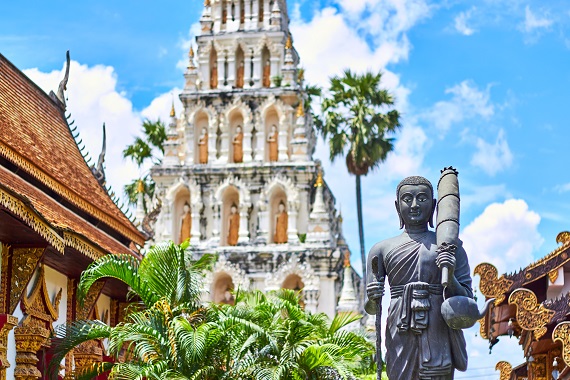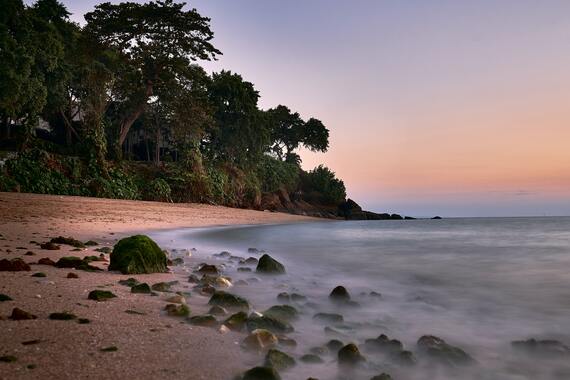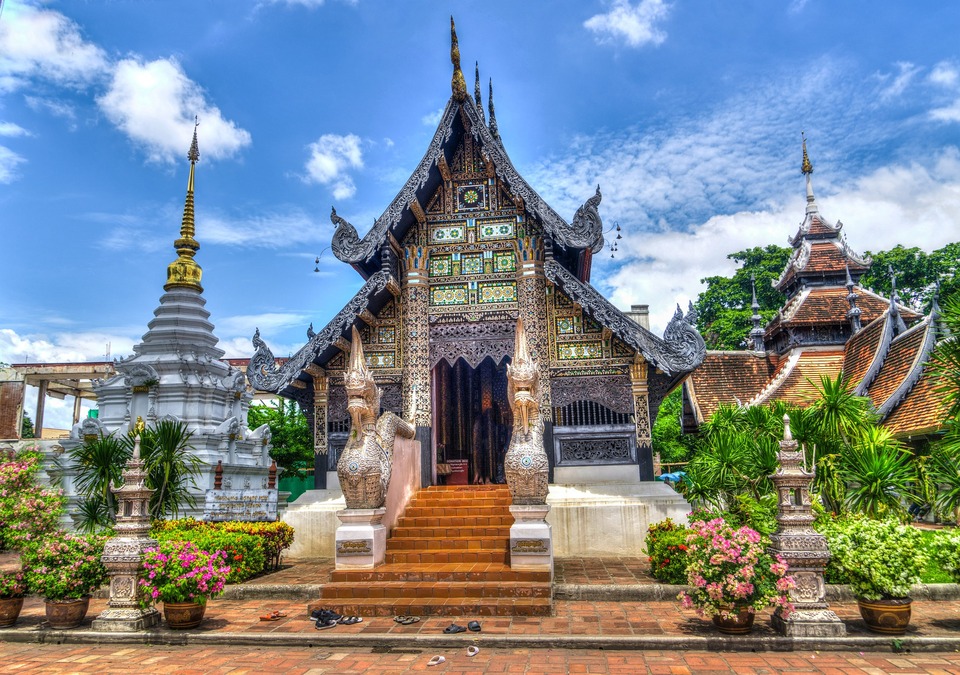
There is no denying that Thailand enthralls, whether it be for the mouthwatering cuisine, fascinating culture, exuberant celebrations, or the prospect of days spent on lovely beaches.
While it is well known for its lush terrain and stunning islands that sparkle on warm, sunny days, a rainy season and occasionally hot temperatures make it important to choose the ideal time for you to visit. Here are some tips for picking the ideal time to visit Thailand.
There are a variety of activities to try, from touring the numerous elaborate temples and monuments to relaxing on a sand beach with a festive drink. Surfing, fishing, snorkeling, and whale and dolphin watching are just a few of the aquatic pursuits available to water sports aficionados.
The modern and the old coexist in the vibrant Bangkok metropolis, which is a kaleidoscope of sights and noises.
Although the numerous islands and beach locations offer a quieter, slower pace of life in stark contrast to the bustling cities.
Thailand is a fantastic travel destination all year round, but due to its position, the nation occasionally experiences climate extremes that could affect your choice. Finding the best time to visit Thailand is key to having the experience you’re hoping for.
The kind of experience you’re hoping to enjoy will have a big impact when you visit Thailand. We have all the information you need to make an informed decision about where to travel if you’re organizing a trip for a certain event or season. Or even if you only have a tiny window of time to travel.
Thailand’s colder season, which lasts from November to March, is the busiest time for travel. Do not be misled by the fact that it technically winters. The humidity is lower than it would be during other times of the year, yet temperatures are still in the high 20s (Celsius).
This is also a popular period with other travelers because of the excellent weather. As a result, you may anticipate long lines at tourist attractions and expensive lodging all around Thailand. Booking in advance is recommended if you plan to visit during this season because hotels book up quickly.
The ideal time to travel if you want to avoid rain is in February because it’s the driest month, especially in the south. If you want to visit when prices are lower and there are fewer people around, consider April and May, as well as September and October.
Right now, the weather is still pleasant and not too hot. Rains are possible, although they typically come in the form of a brief, intense shower. The flood of tourists from Europe having their summer vacations along the west coast can make August busier in Thailand.
In Thailand, the summers are humid, which amplifies the already-high temperatures. Since it’s the rainy season, rain is predicted to fall virtually daily, perhaps resulting in travel delays and schedule modifications.
Due to the weather, there are significantly fewer visitors, and rates are pleasantly reduced. No matter what your Thai itinerary entails, now is the most affordable time to travel there.
It’s not the best season to travel for activities like water sports, hiking, or relaxing on the beach, but if you’re interested in a cultural experience like taking Thai cookery classes or seeing temples, it’s worth it.
Best Time for Sightseeing in Thailand

Thailand is best visited between November and February if you want to go sightseeing. Even though it is technically winter, temperatures are still warm, rising to the high 20s (Celsius).
As it is the busiest time of year, tourists will be in large numbers and there will be long lines at restaurants and attractions. You would be wise to make reservations well in advance if you wanted to travel at this time to prevent disappointment.
The months from September to November are good if you want to avoid the crowds and get a great discount on lodging. While rains are prevalent throughout this rainy season, they typically only last an hour or two in the late afternoon and evening.
This is the least expensive and most popular time of year in Thai, although it may cause some travel delays if the dirt roads turn to mud.
Busiest Time to Visit Thailand
Thailand is a prominent tourist location that attracts visitors all year. Certain seasons of the year have higher tourist traffic than others because the majority of people come to this tropical paradise in search of a relaxing beach vacation.
In Thailand, the milder months of November through April are considered peak seasons. With temperatures in the high 20s (Celsius) and low humidity, the climate is less oppressive.
Although it may cost more, now is the ideal time to travel to Thailand for a beach vacation, swimming, and snorkeling. Beaches, transportation hubs, and dining establishments will all be busy.
Many travelers flock to Thailand during Songkran, the Thai New Year holiday, in April to participate in the joyous water fights that take place in the streets all around the country.
It’s advisable to plan and reserve your journey as long in advance as you can if you intend to travel to Thailand during the busy season. There are more possibilities for lodging, and by making a reservation far in advance, prices can occasionally be reduced.
Be advised that there will be tighter booking and cancellation policies when making reservations during the high season. Another surge in tourism occurs in August as European visitors come to Thailand for their summer vacations.
Weather in Thailand

Thailand has a year-round pleasant tropical climate. Thailand has three distinct weather seasons: wet (May to October), chilly (November to February), and hot (March to May) (March to May). As the humidity rises, the high summer temperatures may seem hotter.
The cool season, which lasts from November to February, is regarded as the busiest travel period. At this time of year, Thailand experiences comfortable, hot weather (between the high 20s and low 30s), low humidity, and infrequent rainfall.
When traveling during the chilly season, you’ll probably need to make reservations far in advance to avoid disappointment. Get ready to share the road with many other travelers at this time.
Less humidity and generally colder temperatures can be anticipated in the northern part of the country. It can get chilly in the more mountainous areas between November and February, with lows in the single digits (Celsius).
Additionally, the rainy season varies from location to place. While the southern regions have their downpours between May and October, the northeast experiences rain most frequently between November and April.
Thailand’s southern regions receive the most rain overall, typically in the form of brief, dramatic downpours that pass rapidly. The hottest areas in the nation are those in the center.
This includes locations like Bangkok, where the heavy humidity makes it feel much hotter. Bangkok is a terrific spot to go shopping during the rainy season when the Amazing Grand Sale is held from mid-June to mid-August.
Thailand Travel Schedule: A Month-by-Month Analysis

If you’re still trying to figure out the best time to visit Thailand, we’ve broken down each month of the year and outlined the experience you’re likely to have. If you have a very limited time to travel and need help to determine what’s good at that time, this breakdown will help.
January in Thailand
January has beautiful weather across the country, with milder temperatures and a lesser probability of rain. Chiang Mai is the coolest in January, with temperatures dipping to roughly 10-15oC.
The tourist season has begun throughout the country, so roads, restaurants, and beaches are likely to be congested and more expensive.
February in Thailand
Expect warm weather with highs and lows in the 20s and 30s. More rain is likely to occur as you go farther north, and it may also pour sporadically along the east coast. Rain typically falls in brief showers that slightly chill the environment.
In other parts of the country, February has warm, sunny weather with little chance of rain, making it the ideal month for beach vacations.
You should make your travel plans well in advance if you intend to go during peak season because it’s a popular time to visit. Some people may be put off by tourist crowds and higher prices.
March in Thailand
March is generally beautiful and warm. Temperatures can reach the mid-30s as summer approaches, and there is little rain. This is an excellent time to go scuba diving along the west coast. As the off-season draws near, tourist crowds start to thin out and costs may begin to decline.
April in Thailand
As the monsoon approaches, temperatures in April continue to rise, and the combination of rising humidity can make the heat rather uncomfortable.
People flock to the country in greater numbers throughout April to celebrate the Songkran New Year. Despite being a fantastic experience, it comes with higher costs and larger crowds.
May in Thailand
Despite a slight drop in temperature from April, it remains oppressively hot. Because it rains more frequently, there is a significant increase in humidity.
There are still many sunny days to be enjoyed even though the rainy season is soon to arrive. If you want to avoid crowds and high prices while traveling, this is a good time to do so. You’ll still experience beautiful weather that isn’t too hot or too rainy.
June in Thailand
You can expect to have some gorgeous bright days with a few afternoon showers that pass as quickly as they arrive in June because it is still considered to be the shoulder season. Currently, the west coast experiences a little bit more rain than other regions.
June is a tremendously exciting time to come because it hosts several cuisine and music festivals. Overall, you’ll benefit from June’s shoulder season, which means fewer tourists and some excellent lodging deals.
July in Thailand
In July, more rain is predicted, especially along the coast, but the temperature will still be in the low 30s. Due to an increase in tourists as a result of the beginning of the summer vacation, hotel rates are likely to rise at this time.
July is a month with a few significant holidays, including the King’s birthday and the Buddhist season of Lent.
August in Thailand
The north and west of Thailand have the heaviest rainfall, making travel there much less desirable. As a result, you’re probably going to find some great travel offers now. The east coast is a well-liked destination for European vacationers because it is still largely free of rain.
September in Thailand
Escaping the islands is challenging due to the torrential rain and rough seas. The rest of the country experiences muddy roads and humid conditions as a result of the heavy rains, which makes the average temperature of 32°C feel much hotter.
The fact that there won’t be many other travelers means that you can score some excellent deals.
October in Thailand
Most of the nation’s major rainstorms begin to subside, taking with them a significant amount of the humidity, especially in the north. As we go into the winter, temperatures are also dropping.
A greater number of travelers are drawn to the area by the milder environment. Prices start to rise steadily toward peak season as tourist begins to increase once more. Numerous religious events coincide with the end of Lent and the rainy season.
November in Thailand
The peak season begins when travelers arrive in droves on the west coast for beach vacations because of the region’s favorable climate and clear skies.
Even now, if you book in early, you may be able to find a good deal on lodging. The country’s north and high-lying areas experience the onset of cool weather, with mornings and nights becoming noticeably chilly. Only now are the east coast and the gulf islands experiencing their heaviest rainfall.
December in Thailand
Thailand’s nicest weather may be found in December; it’s sunny and comfortable with little rain. You should book far in advance if you intend to travel during the peak season because peak season prices are to be expected along with peak season crowds.
High rates, stricter booking requirements, and cancellations are all characteristics of the Christmas and New Year period. Visitors to the southeast should not forget to carry a light rain jacket as rainfall is still predicted, while those coming to the north should pack some warm clothing to combat the nighttime chill.
Conclusion
In conclusion, determining the best time to visit Thailand is a task that depends on various factors, from weather preferences and budget considerations to the type of experiences you’re seeking.
Whether you’re drawn to the vibrant festivities of Songkran, the lush beauty of the monsoon season, or the clear skies and pleasant temperatures of the cool season, Thailand offers something for every traveler throughout the year.
Ultimately, the best time to visit Thailand is a subjective choice, guided by your personal preferences and the experiences you’re seeking.
Whether you’re a sun-seeking beach enthusiast, an adventure lover, or a culture enthusiast, Thailand welcomes you with open arms, ensuring that your journey will be nothing short of unforgettable, regardless of the time you choose to embark on it.
